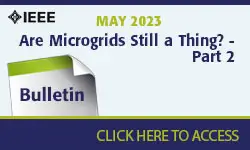-
Members: Free
IEEE Members: $11.00
Non-members: $15.00Length: 1:02:29
30 Apr 2020
This presentation addresses topics covering utilities new practices to reduce economic barriers to the expansion of renewable DERs. Increasing DER Hosting Capacity not only can enable more market participants, but primarily improves the economic feasibility of many projects. Traditional utility practices are very restrictive on how DERs can operate. Forms of operational control that were not previously adopted, such as DER voltage control, have recently been considered and accepted by utilities to fulfill modern societal mandates. Another essential feature in the interconnection of DERs is the ability to detect operation under islanded condition. International standards have strict requirements for detection and extinction of islanding conditions, resulting in requirements that may preclude renewable DER projects to become financially viable. The acceptance of inverter native active anti-islanding schemes is a potential low-cost solution but represents a new paradigm for electric utilities. Similarly, employing out-of-the-box solutions to improve performance grounding and protection coordination are needed to streamline interconnection.Outline Part I:- Environment conducive to DER proliferation- Distribution system considerations- Utilities must adapt to high DER penetration scenarios- DER impacts and review of DER interconnection standards- DER problem #1 - Steady-State Overvoltage and mitigation- DER problem #2 - Variability and its impact on distribution system planning
Primary Committee:
IEEE Smart Grid Webinars


